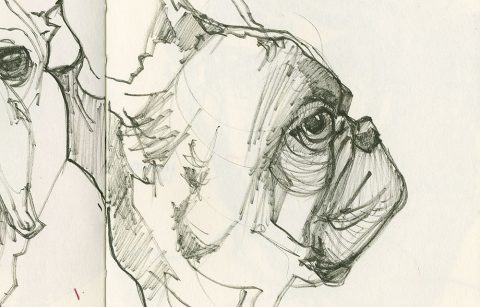Recently a subscriber on my Patreon site asked me about a gesso comment I made during a webinar. It seemed easier to answer the question with a video response. And once the video was finished I realized a lot of readers here would probably like this information as well.
It’s something I’ve discussed in past posts, but some of those are now in the non-public archive so it’s good to revisit it.
This post on coating bookboard (binder’s board) is still open and you can read it for more detail too.
And if you want to cover the naked boards of your wirebound sketchbook with acrylic paint I have this post on how to do that.
Something I didn’t even get into in the video is the use of gesso in book arts—specifically in altered books. In that endeavor gesso is always your friend. Gesso or absorbent ground (if the latter suits your tastes and needs better) instantly make any page in any book, more user friendly. (Yes, on lighter weight papers there might be some curling while the product dries. Just be prepared with masking tape to hold it flat and keep it from curling and sticking to itself. But once it’s dried I’ve always found that the other things I added to the page in collage and paint helped it go back to flat—especially if you simply treat the opposite side of the page with gesso once the first side has dried.
There is also transparent acrylic gesso. I use this frequently in my altered books and in my fake journals (for International Fake Journal Month). The fun of transparent gesso is that you can see what’s underneath it. I use the Daniel Smith product. It’s toothier than regular gesso, but that works for me and what I like to do on top of it—add more stuff with good adhesion, draw with dry media, or paint and sketch with various pens and paints.
Here’s my video about using Gesso: tools, approaches, and some other suggestions.
If the video doesn’t show or play you can watch it on my YouTube channel or you can view it here on Vimeo.
Just a note about watching in Vimeo—they create subtitles automatically and they often “auto-correct” what they think I’m saying. Evidently when I say “gesso” they hear something else—so be aware of that. If you don’t need the captions I recommend you turn them off because they hide the callouts I add to my videos—callouts in which I put additional information or corrections to my mis-speaks, the real ones not the auto-correct ones!






















